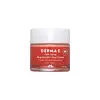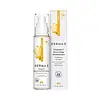What's inside
What's inside
 Key Ingredients
Key Ingredients

 Benefits
Benefits

 Concerns
Concerns

 Ingredients Side-by-side
Ingredients Side-by-side

Water
Skin ConditioningGlycerin
HumectantCaprylic/Capric Triglyceride
MaskingStearic Acid
CleansingCetyl Alcohol
EmollientGlyceryl Stearate Citrate
EmollientGlyceryl Stearate
EmollientPanthenol
Skin ConditioningDimethicone
EmollientSimmondsia Chinensis Seed Oil
EmollientTocopheryl Acetate
AntioxidantXanthan Gum
EmulsifyingCetearyl Glucoside
EmulsifyingAllantoin
Skin ConditioningPinus Pinaster Bark Extract
AntioxidantSodium Hydroxide
BufferingBakuchiol
AntimicrobialAstaxanthin
Skin ConditioningLavandula Angustifolia Oil
MaskingSalvia Officinalis Oil
MaskingLimonene
PerfumingPolysorbate 20
EmulsifyingRetinol
Skin ConditioningEucalyptol
PerfumingCopaifera Reticulata Balsam Oil
PerfumingMentha Viridis Leaf Oil
AstringentBeta-Caryophyllene
MaskingCamphor
MaskingCitral
PerfumingL-Alpha-Pinene
PerfumingGeranyl Acetate
PerfumingAnthemis Nobilis Flower Oil
MaskingL-Beta-Pinene
PerfumingMelaleuca Alternifolia Leaf Oil
AntioxidantIsobornyl Acetate
MaskingNeryl Acetate
PerfumingMenthone
PerfumingBenzyl Acetate
MaskingCitronellal
MaskingTerpineol
MaskingMenthyl Acetate
MaskingPhenoxyethanol
PreservativePotassium Sorbate
PreservativeEthylhexylglycerin
Skin ConditioningWater, Glycerin, Caprylic/Capric Triglyceride, Stearic Acid, Cetyl Alcohol, Glyceryl Stearate Citrate, Glyceryl Stearate, Panthenol, Dimethicone, Simmondsia Chinensis Seed Oil, Tocopheryl Acetate, Xanthan Gum, Cetearyl Glucoside, Allantoin, Pinus Pinaster Bark Extract, Sodium Hydroxide, Bakuchiol, Astaxanthin, Lavandula Angustifolia Oil, Salvia Officinalis Oil, Limonene, Polysorbate 20, Retinol, Eucalyptol, Copaifera Reticulata Balsam Oil, Mentha Viridis Leaf Oil, Beta-Caryophyllene, Camphor, Citral, L-Alpha-Pinene, Geranyl Acetate, Anthemis Nobilis Flower Oil, L-Beta-Pinene, Melaleuca Alternifolia Leaf Oil, Isobornyl Acetate, Neryl Acetate, Menthone, Benzyl Acetate, Citronellal, Terpineol, Menthyl Acetate, Phenoxyethanol, Potassium Sorbate, Ethylhexylglycerin
Water
Skin ConditioningCaprylic/Capric Triglyceride
MaskingSodium Ascorbyl Phosphate
AntioxidantGlycerin
HumectantGlyceryl Stearate
EmollientCetearyl Olivate
Sorbitan Olivate
EmulsifyingCetyl Alcohol
EmollientPrunus Armeniaca Kernel Oil
MaskingAspalathus Linearis Leaf Extract
Skin ConditioningRosa Canina Seed Oil
EmollientCamellia Sinensis Leaf Extract
AntimicrobialVitis Vinifera Seed Oil
EmollientOlea Europaea Fruit Oil
MaskingPanthenol
Skin ConditioningAllantoin
Skin ConditioningTocopheryl Acetate
AntioxidantPotassium Cetyl Phosphate
EmulsifyingXanthan Gum
EmulsifyingPotassium Sorbate
PreservativeRetinol
Skin ConditioningPolysorbate 20
EmulsifyingBakuchiol
AntimicrobialCitric Acid
BufferingEthylhexylglycerin
Skin ConditioningPhenoxyethanol
PreservativeParfum
MaskingWater, Caprylic/Capric Triglyceride, Sodium Ascorbyl Phosphate, Glycerin, Glyceryl Stearate, Cetearyl Olivate, Sorbitan Olivate, Cetyl Alcohol, Prunus Armeniaca Kernel Oil, Aspalathus Linearis Leaf Extract, Rosa Canina Seed Oil, Camellia Sinensis Leaf Extract, Vitis Vinifera Seed Oil, Olea Europaea Fruit Oil, Panthenol, Allantoin, Tocopheryl Acetate, Potassium Cetyl Phosphate, Xanthan Gum, Potassium Sorbate, Retinol, Polysorbate 20, Bakuchiol, Citric Acid, Ethylhexylglycerin, Phenoxyethanol, Parfum
Ingredients Explained
These ingredients are found in both products.
Ingredients higher up in an ingredient list are typically present in a larger amount.
Allantoin is a soothing ingredient known for its protective and moisturizingg properties. Because of this, it is often added to products with strong active ingredients.
Studies show higher concentrations of this ingredient can promote wound healing.
Though it can be derived from the comfrey plant, allantoin is produced synthetically for cosmetic products to ensure purity.
Learn more about AllantoinBakuchiol is a plant-derived antioxidant (it's vegan!). It is often called the replacement for retinol although it is not part of the same family.
It has similar effects as retinol: skin smoothing, reducing discoloration, and preventing wrinkles. It does not cause as much irritation as traditional retinoids.
Bakuchiol works by breaking down free radicals and stimulating collagen production in skin.
Combining bakuchiol with retinol will not have adverse side effects. Studies show using them will just boost the benefits. Bakuchiol is also found to help stabilize retinol.
While bakuchiol does not make the skin more sun sensitive, we recommend wearing SPF on a daily basis.
Read more about traditional retinol
Learn more about BakuchiolThis ingredient is an emollient, solvent, and texture enhancer. It is considered a skin-softener by helping the skin prevent moisture loss.
It helps thicken a product's formula and makes it easier to spread by dissolving clumping compounds.
Caprylic Triglyceride is made by combining glycerin with coconut oil, forming a clear liquid.
While there is an assumption Caprylic Triglyceride can clog pores due to it being derived from coconut oil, there is no research supporting this.
Learn more about Caprylic/Capric TriglycerideCetyl Alcohol is a fatty alcohol. Fatty Alcohols are most often used as an emollient or to thicken a product.
Its main roles are:
Though it has "alcohol" in the name, it is not related to denatured alcohol or ethyl alcohol.
The FDA allows products labeled "alcohol-free" to have fatty alcohols.
Learn more about Cetyl AlcoholEthylhexylglycerin (we can't pronounce this either) is commonly used as a preservative and skin softener. It is derived from glyceryl.
You might see Ethylhexylglycerin often paired with other preservatives such as phenoxyethanol. Ethylhexylglycerin has been found to increase the effectiveness of these other preservatives.
Glycerin is already naturally found in your skin. It helps moisturize and protect your skin.
A study from 2016 found glycerin to be more effective as a humectant than AHAs and hyaluronic acid.
As a humectant, it helps the skin stay hydrated by pulling moisture to your skin. The low molecular weight of glycerin allows it to pull moisture into the deeper layers of your skin.
Hydrated skin improves your skin barrier; Your skin barrier helps protect against irritants and bacteria.
Glycerin has also been found to have antimicrobial and antiviral properties. Due to these properties, glycerin is often used in wound and burn treatments.
In cosmetics, glycerin is usually derived from plants such as soybean or palm. However, it can also be sourced from animals, such as tallow or animal fat.
This ingredient is organic, colorless, odorless, and non-toxic.
Glycerin is the name for this ingredient in American English. British English uses Glycerol/Glycerine.
Learn more about GlycerinGlyceryl Stearate is a mix of glycerin and stearic acid.
It is used to stabilize the mixing of water and oil ingredients. By preventing these ingredients from separating, it can help elongate shelf life. It can also help thicken the product's texture.
As an emollient, it helps soften skin and supports barrier-replenishing ingredients.
In cosmetics, Glyceryl Stearate is often made from vegetable oils or synthetically produced.
This ingredient may not be fungal-acne safe
Fun fact: The human body also creates Glyceryl Stearate naturally.
Learn more about Glyceryl StearatePanthenol is a common ingredient that helps hydrate and soothe the skin. It is found naturally in our skin and hair.
There are two forms of panthenol: D and L.
D-panthenol is also known as dexpanthenol. Most cosmetics use dexpanthenol or a mixture of D and L-panthenol.
Panthenol is famous due to its ability to go deeper into the skin's layers. Using this ingredient has numerous pros (and no cons):
Like hyaluronic acid, panthenol is a humectant. Humectants are able to bind and hold large amounts of water to keep skin hydrated.
This ingredient works well for wound healing. It works by increasing tissue in the wound and helps close open wounds.
Once oxidized, panthenol converts to pantothenic acid. Panthothenic acid is found in all living cells.
This ingredient is also referred to as pro-vitamin B5.
Learn more about PanthenolPhenoxyethanol is a preservative that has germicide, antimicrobial, and aromatic properties. Studies show that phenoxyethanol can prevent microbial growth. By itself, it has a scent that is similar to that of a rose.
It's often used in formulations along with Caprylyl Glycol to preserve the shelf life of products.
Polysorbate 20 is made by combining ethoxylation of sorbitan, ethylene oxide, and lauric acid. It is a mild cleansing agent, surfactant, and emulsifier.
As a surfactant, it helps collect dirt and oils for washing. Emulsifiers prevent oils and water from separating.
Polysorbate 20 also adds scent to a product. Since it is made using sorbitol, it has a sweet scent. Sorbitol can also be found in fruits such as apples and peaches.
The lauric acid used to create Polysorbate 20 is often derived from coconuts.
Polysorbate 20 may not be fungal acne safe.
Learn more about Polysorbate 20Potassium Sorbate is a preservative used to prevent yeast and mold in products. It is commonly found in both cosmetic and food products.
This ingredient comes from potassium salt derived from sorbic acid. Sorbic acid is a natural antibiotic and effective against fungus.
Both potassium sorbate and sorbic acid can be found in baked goods, cheeses, dried meats, dried fruit, ice cream, pickles, wine, yogurt, and more.
You'll often find this ingredient used with other preservatives.
Learn more about Potassium SorbateRetinol is a gold-standard ingredient for anti-aging. It is a form of Vitamin A and belongs to the class of retinoids that also includes tretinoin.
Why is retinol famous?
It has the most scientific studies backing up its skin benefits out of all the non-prescription ingredients.
Retinol is proven to:
This is why retinol is effective at removing wrinkles, fading dark spots, treating acne, and reducing the appearance of pores.
Studies show retinol is less effective when exposed to UV. Be sure to look for appropriate packaging to keep your retinol potent (similar to Vitamin C).
Using retinol or any retinoids will increase sun-sensitivity in the first few months. Though studies show retinoids increase your skin's natural SPF with continuous use, it is best to always wear sunscreen and sun-protection.
We recommend speaking with a medical professional about using this ingredient during pregnancy.
Retinol may cause irritation in some people, so be sure to patch test. Experts recommend 'ramping up' retinol use: start using this ingredient once a week and work up to using it daily.
Read about Tretinoin
Learn more about RetinolTocopheryl Acetate is AKA Vitamin E. It is an antioxidant and protects your skin from free radicals. Free radicals damage the skin by breaking down collagen.
One study found using Tocopheryl Acetate with Vitamin C decreased the number of sunburned cells.
Tocopheryl Acetate is commonly found in both skincare and dietary supplements.
Learn more about Tocopheryl AcetateWater. It's the most common cosmetic ingredient of all. You'll usually see it at the top of ingredient lists, meaning that it makes up the largest part of the product.
So why is it so popular? Water most often acts as a solvent - this means that it helps dissolve other ingredients into the formulation.
You'll also recognize water as that liquid we all need to stay alive. If you see this, drink a glass of water. Stay hydrated!
Learn more about WaterXanthan gum is used as a stabilizer and thickener within cosmetic products. It helps give products a sticky, thick feeling - preventing them from being too runny.
On the technical side of things, xanthan gum is a polysaccharide - a combination consisting of multiple sugar molecules bonded together.
Xanthan gum is a pretty common and great ingredient. It is a natural, non-toxic, non-irritating ingredient that is also commonly used in food products.
Learn more about Xanthan Gum